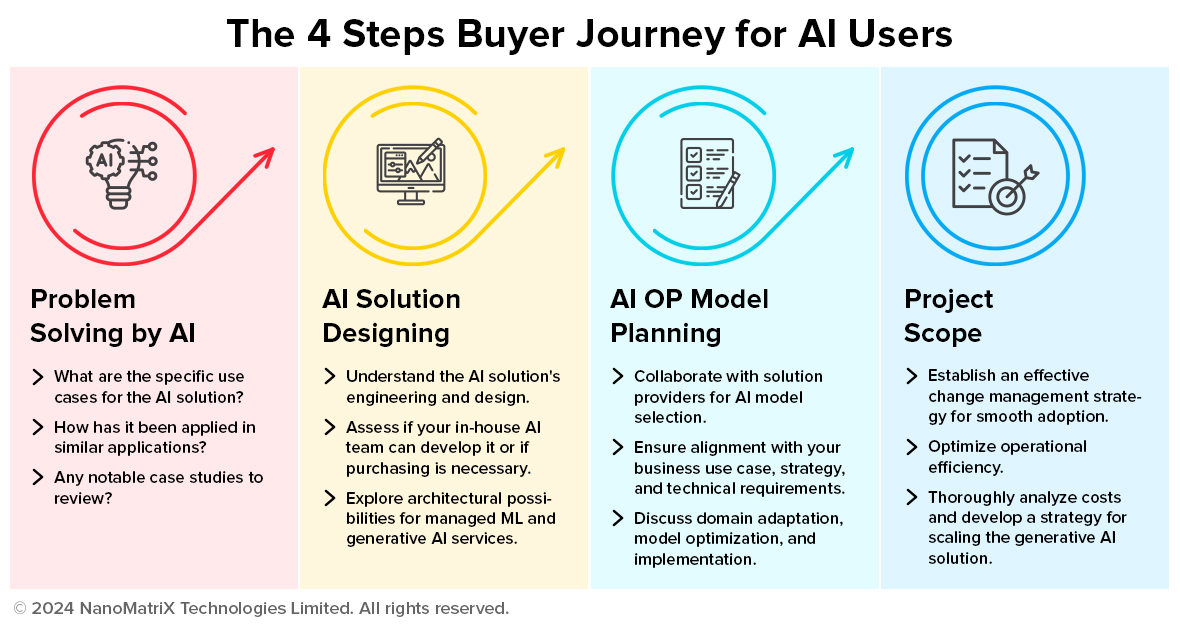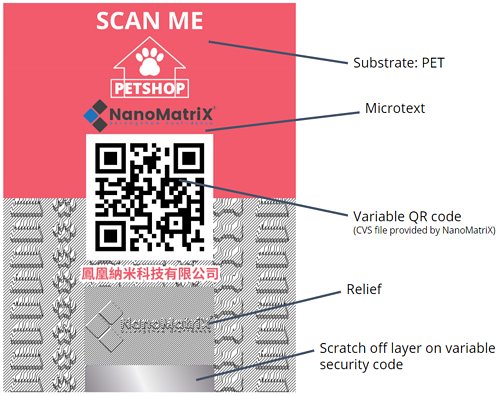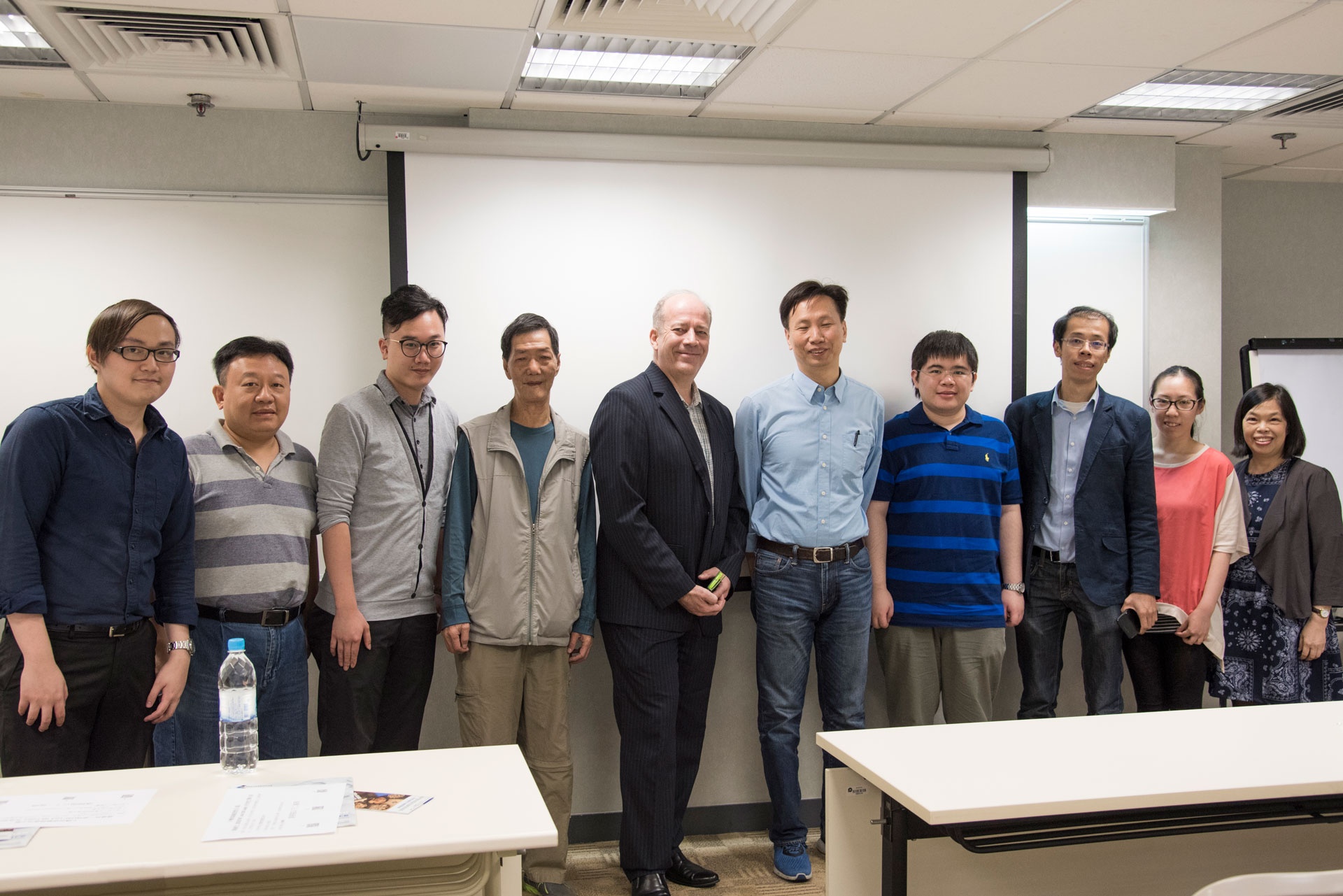This is the fourth blog post for NanoMatriX’s AI Learning and Awareness series.
The trend among businesses to consolidate their data and AI initiatives onto a single platform is gaining momentum. However, it’s crucial to acknowledge the significant variability in the quality of platforms available. Recently, the term “enterprise-grade” has been used liberally by providers, claiming to offer a comprehensive array of data and AI capabilities, often resulting in inconsistent outcomes. This prompts the question: What truly defines an enterprise-grade platform for data and AI?
Managers responsible for navigating the multitude of options must prioritize a forward-looking approach. The optimization for today should not hinder the organization’s ability to adapt to future needs. Given the inherent challenges and complexity of unique solutions, a genuine platform must address the imperative aspects of interoperability, scalable provisioning services, and a unified, shared experience. This ensures the seamless execution of tasks across the spectrum of data management, data governance, analytics, and AI.
In this guide, you will learn how can you navigate your journey as an AI user and several other questions essential for selecting the optimal data and AI platform for your organization. Recognizing the gravity of this decision, the right platform has the potential to elevate business outcomes, drive innovation and digital transformation, and pave the way for a successful return on investment (ROI).
AI Buyer Journey
The AI buyer journey refers to the unique process that individuals or organizations undergo when selecting an AI solution tailored to their business needs. Unlike traditional buying journeys, the AI buyer journey is characterized by the necessity to choose an AI solution that can be effectively trained on specific business data, ensuring optimal performance and relevance to the organization’s objectives.
Stages of the Buyer Journey for AI Users
Let’s explore the 4 stages of the buyer journey for AI users:
1. Initial Assessment and Use Case Requirements of AI Solution
The awareness stage for AI users starts with identifying their needs and pain points. Unlike traditional buyers who might rely solely on intuition or experience, AI solutions need to be assessed initially. You should also ask the AI solution provider about their solution’s specific use cases, applications, and previous case studies.
What more to ask: When assessing an AI solution, you should also ask the solution providers about the corresponding business benefits, key strategic objectives, and technical requirements crucial for the successful implementation of the AI solution.
2. AI Solution Engineering and Design
In this stage, the customer evaluates their options and compares different AI solutions available in the market. They may research online, read reviews, or ask for recommendations. During the consideration stage, access to transparent and unbiased information is essential.
In the consideration stage, you should get familiar with how the AI solution is engineered and designed. In this way, you can assess whether your in-house AI team can develop the exact solution, or you have to purchase it. You should also investigate architectural possibilities for managed ML and generative AI services, and conduct a comprehensive cost assessment for the entire project.
3. Op Model Planning for AI Solution
At this point, the AI customer has decided to purchase a product or service. They may compare prices, read reviews, or seek advice from advisors, consultants, etc. In this stage, you have to collaborate with the solution providers on AI model selection that aligns with your business use case, strategy, and technical requirements. You should also discuss domain adaptation, model optimization, and implementation planning with the AI service provider.
4. Project Scoping and Cost Analysis
The final stage of the AI user buyer journey comprises a thorough analysis of the entire project scope, including a detailed assessment of the costs associated with implementing the AI solution into your business.
This stage also involves navigating the redesign of the operational model to seamlessly integrate the generative AI solution, establishing an effective change management strategy to ensure smooth adoption, optimizing operational efficiency, and thoroughly analyzing the costs and strategy for scaling the generative AI solution.

Questions You Should Ask When Choosing An Enterprise-Grade AI Solution
Before choosing an enterprise-grade AI solution for your business, you should ask and know the following things about the AI solution:
Question 01: Is the Platform Equipped to Unify Data Irrespective of Type, Structure, or Source?
The best data and AI platform should eradicate data silos, enabling seamless data manipulation without necessitating data relocation, regardless of the data’s type, structure, or source. When selecting your data and AI platform, seek one with the capability to execute queries across diverse data sources without the need for data duplication. This querying capability not only reduces costs but also streamlines analytics, ensuring real-time accuracy by directly accessing the latest data at its source.
Specifically, an ideal platform for consolidating your data should integrate solutions for databases, data warehouses, and data lakes. Its databases should employ high-performance and scalable transactional processing with optimized queries. The data warehouses should facilitate analytics across on-premises environments. Additionally, its data lakes should efficiently store and query structured and unstructured data, regardless of the data volume.
Question 02: Can You Scale Data and AI Services Across Any Cloud or On-Premises Environment Efficiently?
Invest in a platform that supports the entire analytics lifecycle, from data management and DataOps to governance, analytics, and AI. Opt for a cloud-native architecture that provides open-source capabilities compatible with various clouds.
This ensures flexibility, eliminates vendor lock-in, and empowers you to choose and define key data and AI services. A cloud-native approach brings benefits such as auto-provisioning, seamless upgrades, built-in high availability, common logging, metering, monitoring, and more.
Question 03: Do the Data and AI Services Promote Interoperability and Self-Service Across Your Organization?
After choosing a platform with the necessary AI services, assess their ease of interoperability and availability for self-service across all roles in your data team. Avoid platforms that demand additional time and resources for service integration. Opt for services that are inherently interconnected and seamlessly collaborate. A suitable AI platform should facilitate the interoperability of all analytics services and offer a unified self-service dashboard to enhance team collaboration and productivity.
Question 04: Can You Automate Governance Policies for Secure Data Compliance and Reduce Manual Work?
When selecting an AI solution for your organization, prioritize the ability to govern your data. Ensuring appropriate governance is essential for working with data securely. Look for a platform with automated data governance capabilities, including data catalogs to facilitate finding, curating, analyzing, preparing, and sharing data while preventing misuse. Active policy management and dynamic masking of sensitive data are vital for compliance, audit readiness, and client trust.
Question 05: Can the Platform Explain AI Outcomes and Ensure Fairness by Minimizing Model Bias and Drift?
Deploying AI with ongoing model evaluation is crucial for staying ahead in leading organizations. Beyond aiding in AI model creation and management, your chosen platform should empower teams to make trusted decisions.
Opt for a platform like NanoMatriX Technologies Limited, enabling continuous monitoring and evaluation of the status, fairness, quality, and drift of AI models. Teams should swiftly assess and mitigate AI risks while having the ability to explain potential biases. Operationalizing AI is essential, but it’s equally critical to ensure fair and responsible use when putting models into operation.
Question 06: Is The AI Solution Cyber-Secure and Data Privacy Protected?
When choosing the AI solution for your business, choose a platform that provides cyber-secure and data privacy-protected AI solutions that can handle mission-critical, sensitive, and confidential data for your organization.
The chosen platform should not only demonstrate resilience against cyber threats but also adhere to stringent data privacy regulations, safeguarding your organization’s valuable information assets from unauthorized access, breaches, and potential misuse. This commitment to cyber-security and data privacy is fundamental for fostering trust, ensuring compliance, and preserving the integrity of your organization’s digital ecosystem.
Why Choose AI Solutions By NanoMatriX
NanoMatriX excels in delivering cutting-edge document and brand protection solutions. Our expertise spans brand/document protection platforms, software development, anti-counterfeiting products, and consultancy services.
Tailored for enterprise needs, our capabilities extend to delivering comprehensive AI solutions, incorporating AI services from leading platforms such as AWS AI Services, ChatGPT, Google Cloud AI Platform, Microsoft Azure AI Services, and IBM Cloud AI Services.
NanoMatriX has also experience integrating AI solutions into enterprise-grade software solutions, such as CRM, ERP, WHM, POS, and others. By providing AI prototyping services and AI solutions, NanoMatriX facilitates the realization of AI aspirations while ensuring robust governance, cybersecurity, and data protection.
The platform offers flexible deployment, scalable solutions, and consumption models. NanoMatriX also satisfies all the questions asked by managers when choosing an AI solution. To address any inquiries about our AI solutions, schedule a consultation with us.
About NanoMatriX Technologies Limited
NanoMatriX is a specialist in providing document and brand protection solutions. To solve our customer’s problems, we provide the following product and service categories:
- Brand-/document protection platforms
- Software development
- Anti-counterfeiting products
- Consulting services
The competitive advantages of NanoMatriX are:
- Two decades of experience helping brand owners and government agencies fight product and document crime worldwide.
- A unique combination of rare-to-find skills in linking physical overt, covert, and forensic security features with secure digital features.
- Proven rigorous application of top cyber security and data privacy protection standards.
- Multi-lingual, multi-cultural, and collaborative corporate culture.
NanoMatriX Technologies Limited is committed to the highest standards of cyber security, data privacy protection, and quality management. Our systems are certified and compliant with leading international standards, including:
- ISO 27001: Ensuring robust Information Security Management Systems (ISMS).
- ISO 27701: Upholding Privacy Information Management Systems (PIMS) for effective data privacy.
- ISO 27017: Implementing ISMS for cloud-hosted systems, ensuring cybersecurity in cloud environments.
- ISO 27018: Adhering to PIMS for cloud-hosted systems, emphasizing privacy in cloud-hosted services.
- ISO 9001: Demonstrating our commitment to Quality Management Systems, and delivering high-quality solutions.
Read the fifth blog post for NanoMatriX’s AI Learning and Awareness series here.





























Recent Comments